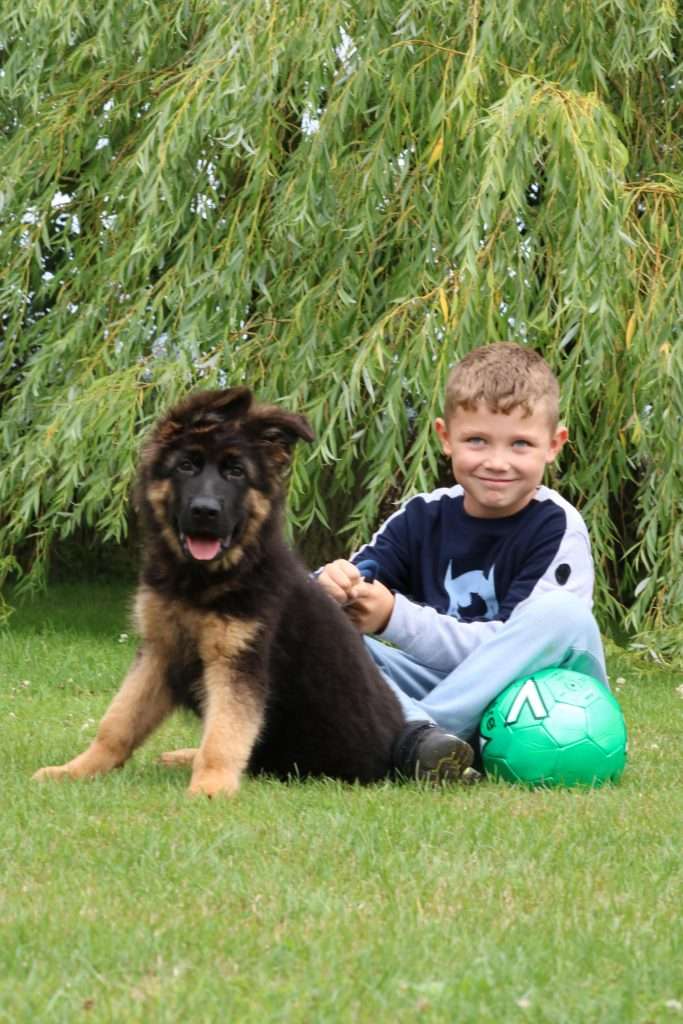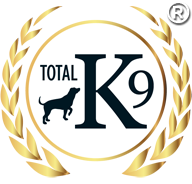Can Family Pets Be Trained as Protection Dogs?
Having a protection dog is one of the best ways to ensure you and your loved ones feel safer, with the added benefit of bringing in a new furry friend into the home. These highly capable animals are expertly trained to perfectly slot into family life while also enhancing at-home security. A growing question among dog owners is whether their beloved family pets can be trained as protection dogs. This article explores the feasibility, implications, and potential benefits of turning your family dog into a protector, and what role professionals like TOTALK9 play in the process.
What is a Protection Dog?
A protection dog is not the same as an aggressive or attack dog. Properly trained protection dogs are obedient, alert, and capable of deterring or defending against threats on command. They combine loyalty with discipline and are taught to respond only under specific instructions. These dogs are both guardians and loyal companions, making them ideal for families when trained correctly.
Can Any Dog Become a Protection Dog?
One of the most common misconceptions is that any dog can be trained for protection work. While most dogs can learn basic obedience and even some personal guarding skills, not all breeds or individual dogs are suitable for high-level protection work.
Breed Considerations
Certain breeds naturally possess the physical attributes and temperament ideal for protection work. In the UK, the following breeds are most commonly used:
• German Shepherds: Known for their intelligence, loyalty, and strength.
• Belgian Malinois: Highly agile and energetic with an excellent work ethic.
• Dobermans: Naturally protective and alert with strong family loyalty.
• Rottweilers: Powerful and courageous, often bonded closely with their owners.
• Giant Schnauzer: Less common, but still capable when properly trained.
That said, even within these breeds, temperament plays a major role. A nervous or overly timid dog may not be suited to protection work, even if it fits the breed profile. You should also think about the lifestyle you will provide this dog, as all breeds have unique traits. A Belgian Malinois, for example, is high-energy and will require lots of exercise.
Temperament and Drive
As touched on above, to become a protection dog, a pet must have a balanced temperament. This should be confident but not aggressive, alert but not overly reactive. They should also exhibit a high level of “drive,” meaning they are motivated to work, play, and follow commands.
Professional trainers like those at TOTALK9 conduct temperament assessments as part of training to determine whether a dog is suitable for protection training. This process helps avoid training dogs that are likely to become unstable or unreliable under pressure.
Can My Family Pet Be Trained?
If you already own a dog and are wondering whether they can be trained to offer protection, the answer is: it depends. There are many key traits we look for at TOTALK9 to assess the overall ability of a dog to become a protection dog. Some of the main things we look at when assessing a potential protection dog include:
• Age: While older dogs can still learn, younger dogs tend to adapt more quickly. That said, a mature dog with the right temperament can still be trained effectively.
• Previous Training: Dogs with a solid foundation in obedience training are more likely to transition successfully into protection roles.
• Health: Protection training can be physically demanding. Dogs must be in good health and have strong mobility.
• Socialisation: Dogs that are well-socialised with people and other animals often perform better in family settings as protection dogs.
Challenges of Training a Family Pet
Unlike dogs that are raised from puppies with the intention of becoming protection dogs, family pets may have ingrained behaviours that need to be addressed. For instance, excessive friendliness, anxiety, or a lack of focus can complicate training.
Additionally, not all family environments are conducive to raising a protection dog. Homes with very young children or multiple animals may require extra precaution and training diligence.
The Role of Professional Training
Training a protection dog is a highly specialised process that requires experience, skill, and a deep understanding of canine behaviour. While most dog owners can teach their pets basic commands like “sit” and “stay,” protection training goes far beyond obedience. It involves developing controlled confidence, teaching dogs to identify real threats, and ensuring they respond appropriately under pressure.
Attempting to train a family dog for protection without professional guidance can be dangerous, leading to unpredictable behaviour, fear-driven aggression, or a dog that fails to respond correctly when needed. Professional training at TOTALK9 ensures that your dog remains a reliable, well-behaved family member while also gaining the ability to protect when required.
Why Professional Training is Essential
Protection training is not about creating an aggressive animal. Instead, it is about building a dog’s confidence, focus, and obedience to a point where they can assess situations calmly and react only under command. Untrained or improperly trained dogs may become confused and overreact to benign situations, posing risks to family members, neighbours, and the public.
Professional trainers, such as our team at TOTALK9, use structured, proven methods to ensure your dog learns the difference between normal, everyday activity and genuine threats. This level of precision cannot be achieved through casual training or internet-based tutorials.
The Stages of Professional Protection Dog Training
A reputable training programme usually follows a series of structured phases, each tailored to the individual dog’s temperament, age, and existing skill level. So, let’s take a look at the stages of professional protection dog training:
Initial Assessment
Every dog begins with a temperament and drive assessment. This evaluation allows trainers to determine whether the dog has the natural confidence, nerve strength, and desire to work that protection training requires. TOTALK9’s trainers assess how the dog reacts to new environments, strangers, and mild stressors, which helps identify the dog’s potential.
Foundational Obedience
Obedience is the cornerstone of all protection work. A dog must have complete control in all situations. This includes perfect recall, leash manners, and off-lead commands like “stay,” “down,” and “here.” Without this foundation, it is impossible to progress to more advanced training safely.
Drive Building and Focus
In this phase, trainers help dogs develop the confidence and motivation needed for protection tasks. This often involves engaging the dog in controlled play or bite work using protective sleeves, while simultaneously reinforcing obedience commands. The goal is to teach the dog to channel its natural protective instincts in a focused and controlled way.
Introduction to Controlled Aggression
Once the dog understands basic obedience and drive work, they are taught to bark, hold, and deter on command. For example, the dog learns to protect its owner by displaying a warning bark or standing its ground, but only when instructed. This stage ensures that the dog is never out of control or aggressive without reason.
Scenario Training
Real-world simulation is key to producing reliable protection dogs. Trainers create controlled scenarios, such as mock home intrusions or surprise confrontations, so the dog can practice responding correctly in different environments. This stage teaches the dog to differentiate between normal social interactions and genuine threats.
Family Integration
TOTALK9 ensures that every protection dog is trained to remain a loving, trustworthy companion within the family home. During this phase, the dog is socialised with family members, children, and other pets while maintaining its protective abilities. The aim is a balanced dog that can switch from a relaxed family pet to a protector when needed.
Residential Training Programmes
One of the most effective ways to train a family pet for protection is through a residential training programme. At TOTALK9, dogs stay with experienced trainers in a professional environment where they receive round-the-clock attention. This immersive approach allows trainers to build the dog’s skills intensively, often over a period of weeks or months, depending on the level of protection required. This approach has several advantages:
• Consistent Environment: The dog is supervised and trained by professionals at all times, ensuring steady progress without unintentional bad habits forming.
• Individualised Approach: Each dog’s training plan is customised to suit its unique temperament, strengths, and areas for improvement.
• Faster Results: Intensive daily training accelerates learning, especially compared to at-home sessions where distractions and inconsistent practice can slow progress.
Balancing Family Life with Protection Training
The biggest concern for many pet owners is whether a trained protection dog can still be a loving family pet. The good news is that, with the right training, protection dogs are among the most obedient and socially well-rounded canines. This makes them a perfect addition to the family home.
Living With a Protection Dog
Well-trained protection dogs are not “on edge” all the time. Instead, they’re calm, confident, and know when it’s time to switch into guard mode. Around the home, they behave like any other pet – affectionate, playful, and gentle.
However, it’s important to set boundaries and maintain training standards. This includes consistent obedience routines and refresher training to reinforce commands and expectations.
Children and Other Pets
Many trained protection dogs live harmoniously with children and other pets. However, you must introduce and socialise them properly. In professional settings, dogs are trained to distinguish between normal family interactions and real threats. Children should also be taught how to interact respectfully with the dog, avoiding rough play or teasing.
When Is a Professionally Trained Protection Dog a Better Option?
If your current pet isn’t suitable for protection training, you might consider acquiring a professionally trained dog. TOTALK9 offers fully trained personal and family protection dogs that have been raised from puppies with this role in mind.
These dogs are hand-selected for temperament, trained under strict standards, and socialised to integrate seamlessly into family life. This option provides a safer, more predictable outcome for those who need immediate and reliable protection.
Is Training Your Family Pet for Protection Right for You?
Training your family dog to become a protection dog can be a rewarding venture, but it’s not suitable for everyone or every dog. The right combination of breed, temperament, health, and professional guidance is critical. If your pet meets the criteria, working with professionals like TOTALK9 can transform them into a trustworthy guardian and devoted companion.
For those seeking security without compromise on companionship, protection dog training offers a powerful solution. Whether you’re looking to train your existing pet or invest in a trained protection dog, TOTALK9 can guide you safely and effectively through the process.
Interested in training your dog or acquiring a professionally trained protection dog? Contact TOTALK9 today to arrange a consultation or temperament assessment.

